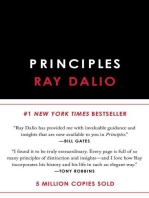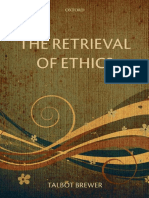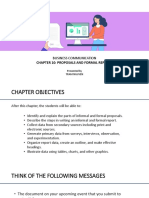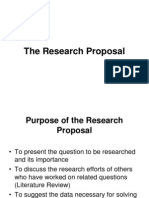0 ratings0% found this document useful (0 votes)
23 views7 CRLT Teaching Philosophy Rubric
7 CRLT Teaching Philosophy Rubric
Uploaded by
Courtney JohnsonCopyright:
© All Rights Reserved
Available Formats
Download as PDF, TXT or read online from Scribd
7 CRLT Teaching Philosophy Rubric
7 CRLT Teaching Philosophy Rubric
Uploaded by
Courtney Johnson0 ratings0% found this document useful (0 votes)
23 views1 pageCopyright
© © All Rights Reserved
Available Formats
PDF, TXT or read online from Scribd
Share this document
Did you find this document useful?
Is this content inappropriate?
Copyright:
© All Rights Reserved
Available Formats
Download as PDF, TXT or read online from Scribd
Download as pdf or txt
0 ratings0% found this document useful (0 votes)
23 views1 page7 CRLT Teaching Philosophy Rubric
7 CRLT Teaching Philosophy Rubric
Uploaded by
Courtney JohnsonCopyright:
© All Rights Reserved
Available Formats
Download as PDF, TXT or read online from Scribd
Download as pdf or txt
You are on page 1of 1
Center for Research on Learning and Teaching, University of Michigan
Rubric for composing and evaluating statements of teaching philosophy
Categories Excellent Needs Some Revision Unsatisfactory
Goals for student learning: Goals are clearly articulated, specific, and go Goals are articulated but may be too Articulation of goals is
What knowledge, skills, and attitudes are beyond knowledge level, including skills, broad or not specific to the discipline. unfocused, incomplete, or
important for student success in your discipline? attitudes, career goals, etc. Goals are sensitive Goals focus on basic knowledge, missing.
What are you preparing students for? What are to the context of the instructor’s discipline. ignoring skills acquisition and
key challenges in the teaching-learning process? They are concise, not exhaustive. affective change.
Enactment of goals (teaching methods): Enactment of goals is specific and thoughtful. Description of teaching methods not Enactment of goals is not
What teaching methods do you use? How do Includes details and rationale for teaching clearly connected to goals, or if articulated. If there is an
these methods contribute to your goals for methods. The methods are clearly connected to connected, not well developed (seems attempt at articulating teaching
students? Why are these methods appropriate specific goals and are appropriate for those like a list of what is done in the methods, it is basic and
for use in your discipline? goals. Specific examples of the methods in classroom). Methods are described, unreflective.
use within the disciplinary context are given. but generically; no example of the
instructor’s use of the methods within
the discipline is communicated.
Assessment of goals (measuring student Specific examples of assessment tools are Assessments are described, but not Assessment of goals is not
learning): clearly described. Assessment tools are connected to goals and teaching articulated or mentioned only
How do you know your goals for students are aligned with teaching goals and teaching methods. Description is too general, in passing.
being met? What sorts of assessment tools do methods. Assessments reinforce the priorities with no reference to the motivation
you use (e.g., tests, papers, portfolios, journals), and context of the discipline both in content behind the assessments. There is no
and why? How do assessments contribute to and type. clear connection between the
student learning? How do assessments assessments and the priorities of the
communicate disciplinary priorities? discipline.
Creating an inclusive learning environment, Portrays a coherent philosophy of inclusive Inclusive teaching is addressed but in a Issues of inclusion are not
addressing one or more of the following education that is integrated throughout the cursory manner or in a way that addressed or addressed in an
questions: statement. Makes space for diverse ways of isolates it from the rest of the awkward manner. There is no
How do your own and your students’ identities knowing and/or learning styles. Discussion of philosophy. Author briefly connects connection to teaching
(e.g., race, gender, class), backgrounds, roles is sensitive to historically identity issues to aspects of his/her practices.
experiences, and levels of privilege affect the underrepresented students. Demonstrates teaching.
classroom? How do you take into account awareness of issues of equity within the
diverse learning styles? How do you integrate discipline.
diverse perspectives into your teaching?
Structure, rhetoric and language: The statement has a guiding structure and/or The statement has a structure and/or No overall structure present.
How is the reader engaged? Is the language theme that engages the reader and organizes theme that is not connected to the Statement is a collection of
used appropriate to the discipline? How is the the goals, methods, and assessments ideas actually discussed in the disconnected statements about
statement thematically structured? articulated in the statement. Jargon is avoided statement, or, organizing structure is teaching. Jargon is used
and teaching terms (e.g., critical thinking) are weak and does not resonate within the liberally and not supported by
given specific definitions that apply to the disciplinary context. The statement specific definitions or
instructor’s disciplinary context. Grammar and contains some jargon. examples. Needs much
spelling are correct. revision.
You might also like
- The Subtle Art of Not Giving a F*ck: A Counterintuitive Approach to Living a Good LifeFrom EverandThe Subtle Art of Not Giving a F*ck: A Counterintuitive Approach to Living a Good LifeRating: 4 out of 5 stars4/5 (5935)
- The Gifts of Imperfection: Let Go of Who You Think You're Supposed to Be and Embrace Who You AreFrom EverandThe Gifts of Imperfection: Let Go of Who You Think You're Supposed to Be and Embrace Who You AreRating: 4 out of 5 stars4/5 (1106)
- Never Split the Difference: Negotiating As If Your Life Depended On ItFrom EverandNever Split the Difference: Negotiating As If Your Life Depended On ItRating: 4.5 out of 5 stars4.5/5 (879)
- Grit: The Power of Passion and PerseveranceFrom EverandGrit: The Power of Passion and PerseveranceRating: 4 out of 5 stars4/5 (598)
- Hidden Figures: The American Dream and the Untold Story of the Black Women Mathematicians Who Helped Win the Space RaceFrom EverandHidden Figures: The American Dream and the Untold Story of the Black Women Mathematicians Who Helped Win the Space RaceRating: 4 out of 5 stars4/5 (925)
- Shoe Dog: A Memoir by the Creator of NikeFrom EverandShoe Dog: A Memoir by the Creator of NikeRating: 4.5 out of 5 stars4.5/5 (545)
- The Hard Thing About Hard Things: Building a Business When There Are No Easy AnswersFrom EverandThe Hard Thing About Hard Things: Building a Business When There Are No Easy AnswersRating: 4.5 out of 5 stars4.5/5 (353)
- Elon Musk: Tesla, SpaceX, and the Quest for a Fantastic FutureFrom EverandElon Musk: Tesla, SpaceX, and the Quest for a Fantastic FutureRating: 4.5 out of 5 stars4.5/5 (476)
- Her Body and Other Parties: StoriesFrom EverandHer Body and Other Parties: StoriesRating: 4 out of 5 stars4/5 (831)
- The Emperor of All Maladies: A Biography of CancerFrom EverandThe Emperor of All Maladies: A Biography of CancerRating: 4.5 out of 5 stars4.5/5 (274)
- The Little Book of Hygge: Danish Secrets to Happy LivingFrom EverandThe Little Book of Hygge: Danish Secrets to Happy LivingRating: 3.5 out of 5 stars3.5/5 (419)
- The World Is Flat 3.0: A Brief History of the Twenty-first CenturyFrom EverandThe World Is Flat 3.0: A Brief History of the Twenty-first CenturyRating: 3.5 out of 5 stars3.5/5 (2271)
- The Yellow House: A Memoir (2019 National Book Award Winner)From EverandThe Yellow House: A Memoir (2019 National Book Award Winner)Rating: 4 out of 5 stars4/5 (99)
- 101 Cabin Crew Final Interview Questions (Q ONLY)Document3 pages101 Cabin Crew Final Interview Questions (Q ONLY)Andy Thedore Browning100% (10)
- Devil in the Grove: Thurgood Marshall, the Groveland Boys, and the Dawn of a New AmericaFrom EverandDevil in the Grove: Thurgood Marshall, the Groveland Boys, and the Dawn of a New AmericaRating: 4.5 out of 5 stars4.5/5 (270)
- The Sympathizer: A Novel (Pulitzer Prize for Fiction)From EverandThe Sympathizer: A Novel (Pulitzer Prize for Fiction)Rating: 4.5 out of 5 stars4.5/5 (122)
- Team of Rivals: The Political Genius of Abraham LincolnFrom EverandTeam of Rivals: The Political Genius of Abraham LincolnRating: 4.5 out of 5 stars4.5/5 (235)
- A Heartbreaking Work Of Staggering Genius: A Memoir Based on a True StoryFrom EverandA Heartbreaking Work Of Staggering Genius: A Memoir Based on a True StoryRating: 3.5 out of 5 stars3.5/5 (232)
- PYP Unit Planner G1 Who We Are 2014Document4 pagesPYP Unit Planner G1 Who We Are 2014Shelby Nail88% (8)
- On Fire: The (Burning) Case for a Green New DealFrom EverandOn Fire: The (Burning) Case for a Green New DealRating: 4 out of 5 stars4/5 (75)
- 'Critical Thinking', in 'Critical Thinking and Everyday Argument'. pp.16-27 (2005)Document14 pages'Critical Thinking', in 'Critical Thinking and Everyday Argument'. pp.16-27 (2005)Nathan ScottNo ratings yet
- The Unwinding: An Inner History of the New AmericaFrom EverandThe Unwinding: An Inner History of the New AmericaRating: 4 out of 5 stars4/5 (45)
- Justification and Rationale of The Selected Activity and The Lesson Plan PreparedDocument2 pagesJustification and Rationale of The Selected Activity and The Lesson Plan PreparedMc Cruzt KristoferNo ratings yet
- The Retrieval of EthicsDocument353 pagesThe Retrieval of EthicsMarisa OmbraNo ratings yet
- Sandbag Training For MMA Combat Sports SampleDocument63 pagesSandbag Training For MMA Combat Sports SampleCourtney Johnson100% (1)
- Research Statements in STEM: Larissa Sano, Ph.D. Sweetland Center For WritingDocument27 pagesResearch Statements in STEM: Larissa Sano, Ph.D. Sweetland Center For WritingCourtney JohnsonNo ratings yet
- Ni 78Xxr Pinout Labels For The Scb-68A: Note To UsersDocument6 pagesNi 78Xxr Pinout Labels For The Scb-68A: Note To UsersCourtney JohnsonNo ratings yet
- Acftprep Original PDFDocument13 pagesAcftprep Original PDFCourtney Johnson100% (4)
- 417-Artificial Intelligence-IX-X-2022-23Document15 pages417-Artificial Intelligence-IX-X-2022-23Kavindra Gaur100% (1)
- Chapter 10: Proposals and Formal Reports: Business CommunicationDocument37 pagesChapter 10: Proposals and Formal Reports: Business CommunicationKhánh Ngọc100% (1)
- Part 1. Questions 1-5: Tauber Insurance CoDocument5 pagesPart 1. Questions 1-5: Tauber Insurance CoAnh Bùi100% (1)
- British Literature Between The WarsDocument2 pagesBritish Literature Between The WarsXenia100% (1)
- MYP Drama CurriculumDocument15 pagesMYP Drama CurriculumYasmine AliNo ratings yet
- OpexDocument16 pagesOpexMAFEROSONo ratings yet
- Studying A Foreign LanguageDocument7 pagesStudying A Foreign LanguagetsachikulgNo ratings yet
- Pqe 7001 Second Language Acquisition Jigsaw Reading Week 7: Lecturer'S NameDocument4 pagesPqe 7001 Second Language Acquisition Jigsaw Reading Week 7: Lecturer'S NameviniNo ratings yet
- Edu690 Problem Statement Unit 2Document4 pagesEdu690 Problem Statement Unit 2api-610591673No ratings yet
- Survey QuestionsDocument3 pagesSurvey Questionsjohn_mateoNo ratings yet
- Problems Chinese Speakers Face in Learning English LanguageDocument3 pagesProblems Chinese Speakers Face in Learning English LanguageAstha MaheshwariNo ratings yet
- Essay Topics Grade TenDocument8 pagesEssay Topics Grade TenMalvin Tafadzwa CharasikaNo ratings yet
- ATL Presentation at To StaffDocument42 pagesATL Presentation at To StaffoscarbecNo ratings yet
- Module 1: Drafting: Introduc Tion To Industria L ArtsDocument9 pagesModule 1: Drafting: Introduc Tion To Industria L Artsgrezelle IgnacioNo ratings yet
- Bun BunDocument304 pagesBun BunAlexandra Elena BalanoiuNo ratings yet
- CAE Reading and Use of English Practice Test 6 PrintableDocument4 pagesCAE Reading and Use of English Practice Test 6 PrintableNicoleta Danila100% (1)
- Creative Nonfiction: What To DoDocument5 pagesCreative Nonfiction: What To DoKisha Meneses BuñoNo ratings yet
- Brent Elder CV January 2016Document12 pagesBrent Elder CV January 2016api-283387493No ratings yet
- Faculty of Education and Language SMP January Intake 2011 Semester 2Document19 pagesFaculty of Education and Language SMP January Intake 2011 Semester 2Kim Yeng Leong100% (1)
- Elof Ohs FrameworkDocument82 pagesElof Ohs Frameworkapi-309215817No ratings yet
- A Reflection of Classroom DisciplineDocument3 pagesA Reflection of Classroom DisciplineMỹ Linh TrầnNo ratings yet
- Budget of Work - PR2Document1 pageBudget of Work - PR2Paul AniceteNo ratings yet
- Mat6 TR IssuuDocument50 pagesMat6 TR Issuuavery.hlthanhhuyenNo ratings yet
- Alfred Adler-1Document3 pagesAlfred Adler-1Muhammad Irfan ParachaNo ratings yet
- Research Proposal (Final)Document30 pagesResearch Proposal (Final)jamesbond_19810105No ratings yet










































































